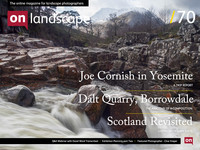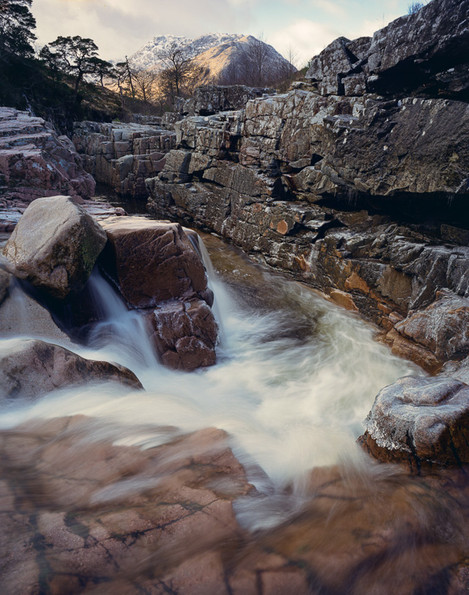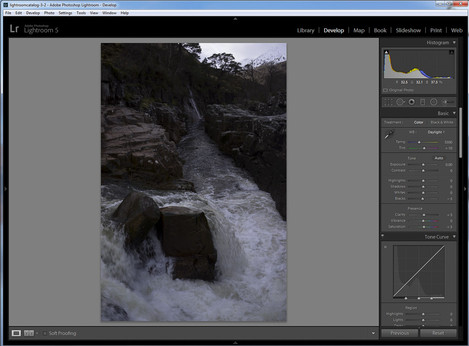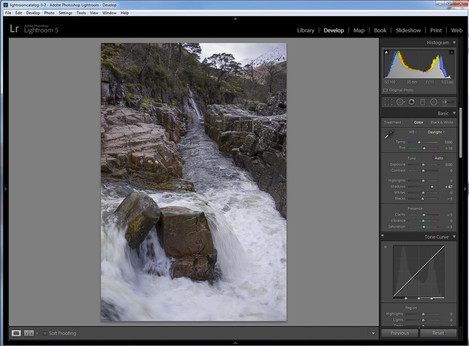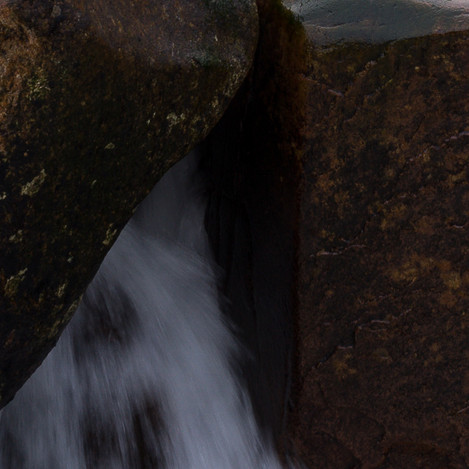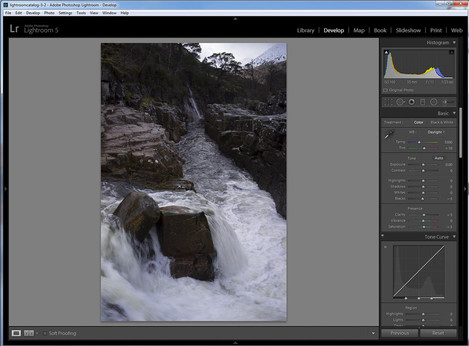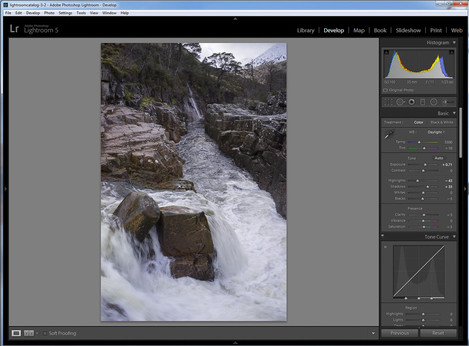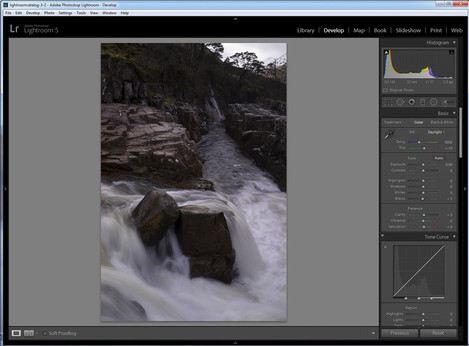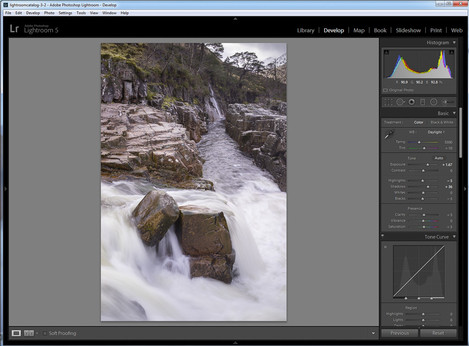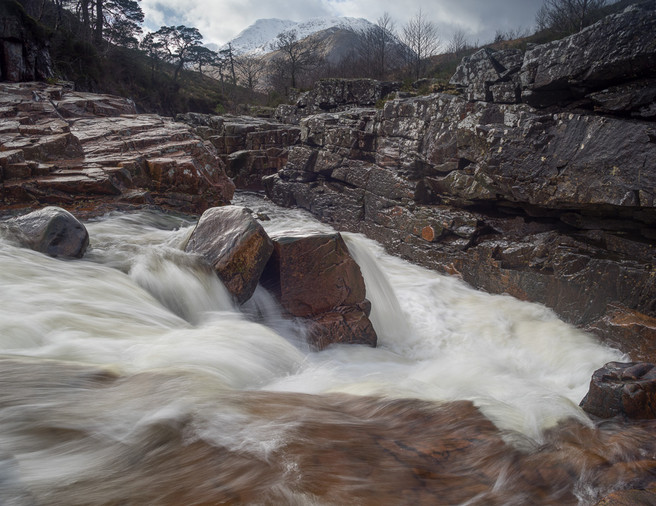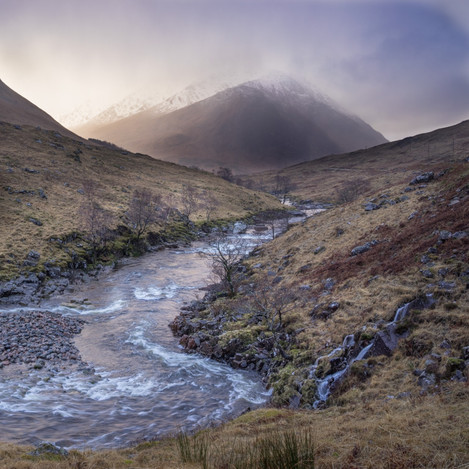Revisiting the use of graduated filters in modern digital cameras
Like many landscape photographers coming from a film background the use of graduated ND filters was second nature and the only way to shoot transparency film. To squash a dynamic range involving foreground and sky into 3.4 stops you get of Velvia 50 was a challenge that needed a certain amount of skill in positioning and selection of ‘grads’.
For me, since the introduction of the D700 in particular and its huge usable dynamic range my filter use on digital has diminished to the point where I don’t often use them at all making do with highlight/shadow recovery or blending of exposures to achieve the desired results. This isn’t an uncommon story amongst my friends and regular photo trip partners.
Perhaps I have got sloppy or lazy but my tolerance to the old adage of getting it right in camera has significantly relaxed since I have shot more and more digital. I was very familiar with the Lee 100mm filter kit on 5x4 and for Nikon digital equipment where a number of the lenses required 77mm and bigger filters but with the move to mirrorless as my main digital system this has some key disadvantages, namely that the transition is rather soft even on the hardest grads and the size isn’t really in keeping with the downsizing philosophy. A typical kit in the 100 series might be a set of 0.3/0.6/0.9 ND grad in hard & soft, polariser & ring, lens hood and adapter rings. Crucially for digital work, the solid ND filters were available as glass variants avoiding some of the redshifts seen when stacking the polyester filters. The original RF75 system didn’t have a lens hood and a maximum size of 67mm and was originally designed with the film rangefinder in mind. The Lee RF75 system has been re-launched as the Seven5 system with a revised filter holder and the ability to take a lens hood plus now some glass ND filters including a ‘big stopper’. It now is similarly specified to the old ‘100’ system that I know and love and can now accommodate 72mm filter threads.
Before doing more with the bare bones system I have I needed to revisit my usage pattern – do I need it at all?
A look back at filter usage in the film days and what issues it was trying to solve is relevant: As already briefly discussed the filter system was essential for working with slide film and was principally used for tonal control ensuring that the highlights could be held whilst maintaining some semblance of shadow detail. The most popular film for landscape work was Fuji Velvia 50 and this had a usable range of plus/minus 1.7 stops. It went black at minus 2 stops on anything other than the brightest lightbox and plus 2 was essentially clear film. I would reckon on 80% of subjects would fit in 7-8 stops so it was mostly manageable with some alternate film stock in the bag for the 20% (negative film or something like Provia which is a bit more forgiving).
In the digital world today it is relatively common to have up to 10-14 stops available at the lower ISO range so holding highlights is just a question of underexposing until they just don’t clip and recovering shadows in post at a small noise penalty even without recourse to HDR or exposure blending. Much of the discussion around ND Graduated filters is still about tonal control.
Where I and others have been having issues is with the management of shutter speed, not so much tonal range. We are all familiar with the use of a ‘big stopper’ or 10 stop ND filter to smooth out the movement of water and clouds but its hitting the sweet spot of around ¼ second for water subjects that proves most challenging. Again, this wasn’t really an issue with V50 on 5x4 or 10x8 because stopping the lens down, and reciprocity it was more an issue with getting faster shutter speeds not slower! With digital and the speedy onset of diffraction means that getting a slow shutter speed is a real problem in anything other than very low light. I had the opportunity, courtesy of Paula at Linhofstudio, to borrow the missing bits from my RF75 kit (lens hood, pro 0.9ND filter) for a trip to Scotland last week with the Sony A7R.
I had a favourite shot in mind that I have been back to with 5x4 on and off for the last 10 years. This was shot on Pro 160S negative film because it was one of the 20% where I stood no chance of holding the snowy mountains and the deep shadows. I had previously tried using grads with both Velvia 50 and Provia 100 and wasn't 100% happy with the results. Shot with an Schneider 80mm XL and Ebony 45S.
I revisited this popular location in Glen Etive the first week of February 2014 with sadly no ice! All pictures were taken with the Zeiss 35mm lens on the A7R at 100ISO.
The first image is taken unfiltered with the exposure dialled down to not clip the highlights in the snow. Fortunately not sunlit on this day which would have added another 2 stops to the problem.
This image is as the Raw file in Lightroom and you can see its not too bad. 1/60th of a second fully holds the highlights if shooting JPEG but 1/25th was OK with RAW albeit with some highlight compression (seen from the shape of the curve). The 1/25th sec shot had some clipping on the back of the screen. This 1/60th second is the reference point for the rest of the shots as it holds the highlights and has the optimum shaped curve.
The second image is applying some basic PP to the RAW file with a grad across the sky and some highlight recovery after raising the overall exposure (as opposed to just pulling the shadows). The principle problem with this image despite it being perfectly satisfactory is the quality of the water. This is less satisfactory (would have been 1/125th) if the digital camera has a base ISO of 200 before compression which many APS-C, in particular, do.
There is a noise penalty which is mainly chroma and is easily dealt with in LR. Here is a comparison of what can be expected in the increase in chroma noise with pulling the shadows in this way by 1.6 stops (first image) vs an image exposed better for the shadows at 1/25th sec. The penalty is inconsequential.
In the third image, I have added a 0.6 (2 stop) ND grad to the sky section only. Shooting at 1/25th of a second at the same aperture holds the highlights in the sky bringing definition back into the snowy mountain and sky without further manipulation. It critically enables the water to start to flow and get the life into the image I was looking for. Note that even using a very hard 2 stop grad only gives a 1 stop improvement over such a small area due to gradation.
Fourth image shows post processing which has been much simpler with the use of highlight/shadow and exposure. This is pretty close to what I wanted and I could have just used a 2 stop ND grad to control my shutter speed even though I didn’t really need it for dynamic range control because it reduces the level at which clipping occurs.
The fifth image shows the RAW file after adding a 0.9 ND Pro glass filter to get the shutter speed down to 1/5th which now has the flow that I wanted through the image. This image could have usefully had a little more exposure to take advantage of the full 3 stops of ND added which if I had been slightly more awake would have given at the time!
The sixth image with some PP and is the final image of the set.
This analysis is a precursor to what I wanted to do at the location which was a stitched panorama with the 35mm Canon FD Tilt/Shift lens with a sweep from left to right and a flow down the canyon. The final shot is:
In conclusion, testing the hypothesis really illustrated to me that I need to re-think my grad usage on digital. I can now see images I have taken that would have benefitted from more thought into how the shutter speed should be used, anything with flowing water benefits from a positive selection of shutter speed. I have had that nagging feeling that I should re-think my approach for some time. I was with Jon Brock who, whilst mainly shooting with a Linhof on 5x4 film also shot some work with an APS-C sensor Sony and could be heard across the Glen cursing the fact that he could not slow the shutter speed down enough to make his composition work.
This final image is something I would not have added an ND grad to or even a straight ND but gave me a lot more control and that lovely flow of water in the stream.
Last words on how the RF75 system worked. On the whole positive:
- The lens hood is excellent and is something I will use a lot. It vignettes from about 24mm (full frame) when fully extended or on full shift on the 35mm Tilt/Shift lens. You can use the polariser with it too.
- The 72mm adapter is a good edition but it vignettes on a 20mm lens so again I would say 24mm is about the widest. Lee doesn’t do wide-angle adapters for the Seven5/RF75 system unlike the 100mm system so it is not a good answer for ultra-wide work.
- Not a fault of the system but exacerbated by the design is that old lenses with rotating front rings are a PITA to set up and use. The RF75 holder and adapters are metal and quite a snug fit. Metal to metal is not the best for usage as it isn’t very smooth and tends to ‘grip’ so everytime you change the filter angle it moves the focus and vice versa. It is not great under normal circumstances but the amount of fiddling about is much less.
To answer the question posed at the beginning, no not dead but I suspect more for shutter speed control than tonal balance – at least for me.

